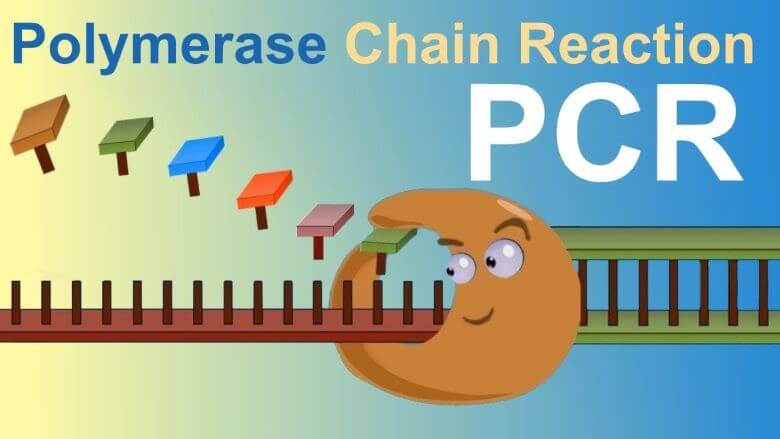PCR Full Form | What is Polymerase Chain Reaction
What is the full form of PCR?
PCR: Polymerase Chain Reaction
PCR stands for Polymerase Chain Reaction. It is a technique that is used to amplify or make copies of a specific region or segment of DNA in a test tube (in vitro). It is a very precise technique as it can be used to make copies of a specific DNA from a mixture of DNA molecule. This technique uses the ability of DNA polymerase to synthesize new DNA strand complementary to the template strand.

How is PCR performed?
- DNA primers, which are two short sequences of DNA, bind to the start and end of the target segment of DNA.
- The DNA template that has the target segment is transferred to a tube that has primers, free nucleotides, and DNA polymerase.
- The tube is placed in a PCR machine that increases and decreases the temperature of the sample in a controlled manner.
- First, it is heated to denature (separate) the double strands of DNA template into single strands. Then, it is cooled down to allow primers anneal or bind to the DNA template.
- Now, the DNA polymerase, which is an enzyme, starts making DNA strands starting from the primers. It results in a double-stranded DNA molecule with one new and one old strand.
- The process continues. The newly generated DNA serves as a template or target DNA in later cycles that allows producing millions of copies of target DNA. This technology was introduced by Kary B. Mullis who was awarded the Nobel Prize for Chemistry in 1993 for this achievement.
PCR is an automated process and takes a few hours to complete. It is done using the thermocycler, a machine that can be programmed to change the temperature of this process to allow separation of DNA strands and its synthesis. A buffer solution is also used in this process that maintains the required chemical environment for the activity and stability of the DNA polymerase.
Why is PCR needed?
- It is a fast and low-cost process to produce copies of small segments of DNA.
- The DNA obtained from an organism is usually less. A large amount of sample of DNA is needed for molecular and genetic analyses that are possible with PCR. Similarly, it is used for the amplification of DNA sample obtained from the site of investigation.
- PCR has also made possible the study of isolated pieces of DNA.
- Many copies of a gene can be produced for the study and research purposes through PCR.
- It is also used to diagnose the mutation that takes place in genetic disorders.